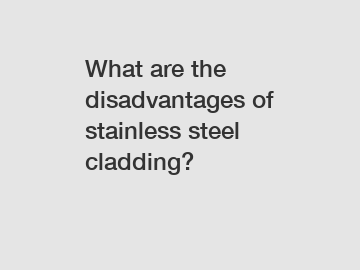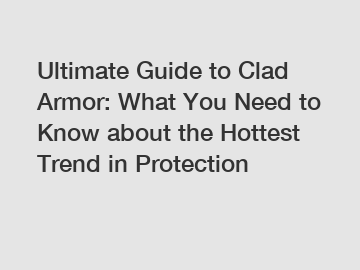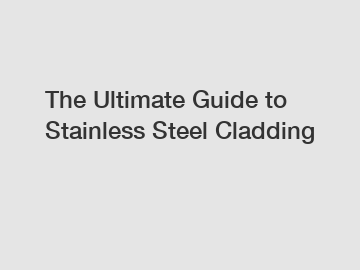Structural steel Definition & Meaning
Recent Examples on the Web
Overshadowed in the maze of piping and structural steel is the turbine itself, which is exceptional mostly for its small size.
—
David Wagman, IEEE Spectrum, 30 May 2018
The rock-like facade covers some 10,000 pieces of steel, Freed said, adding that all of the structural steel was fabricated in Utah.
—
Sean P. Means, The Salt Lake Tribune, 16 Sep. 2023
Created by Christopher Parker, P.E., the modernist residence features exposed structural steel and cast-in-place concrete alongside high-quality materials and luxury finishes.
—
Emma Reynolds, Robb Report, 9 Mar. 2023
Meanwhile, structural steel beams and posts as well as hurricane strapping were likely utilized, which Zasada likens to a corset's boning channels and lacing, respectively.
—
Kelsey Mulvey, House Beautiful, 24 Aug. 2023
This extensive system is tucked underneath the structural steel overbuild at the new tower, right under the truss on the tenth-floor terrace.
—
Audrey Wachs, Curbed, 9 Aug. 2023
Approximately 400 tons of structural steel was donated from a third-party project and reused during the remodel.
—
Ndaschel, oregonlive, 9 Aug. 2023
Steel companies also benefit from rebuilding infrastructure, especially those that manufacture structural steel.
—
Charles Rotblut, Forbes, 4 May 2023
Blue paint, patchy from age and weathering, covered the interior walls and the structural steel that supports the roof.
—
Eric D. Lawrence, Detroit Free Press, 3 May 2023
See More
- Construction Materials
- Materials
What Is Structural Steel?
Steel is everywhere in construction, to the beams holding roofs up to the sceletons of entire buildings, down to the very tools you use. Steel isn’t just one thing though—there are many different kinds of steel and different steel shapes, each with its own purpose and use. Learn more about the different kinds of structural steel how it’s used in construction.
What is structural steel?
Structural steel is metal used in construction materials. Fundamentally, it is defined as steel optimized for use in building construction—differentiated from a steel grade one might use to engineer tools, or stainless steel popularly used in kitchen surfaces and appliances.
Structural steel is generally a carbon steel, meaning it has a chemical composition containing both iron and carbon. Structural steel is any category of steel with a carbon content of up to 2.1% of its total weight. The higher the carbon content, the higher a piece of steel’s yield strength—meaning it is less ductile, or less likely to bend or warp when pressure is applied.
How does carbon content affect steel?
One might think steel used in construction should have a relatively high carbon content because it is less likely to bend under pressure. However, low-carbon steel, also known as “mild steel,” is actually the most commonly used type of steel in building materials. It typically contains anywhere from 0.04% to 0.3% carbon content, rendering it strong yet ductile. Steel buildings, especially tall steel buildings, must be strong, but also somewhat flexible. Overly rigid buildings cannot accommodate natural shiftings in the earth, which can be caused by neighboring construction or even earthquakes, nor can they bend with high winds. For this reason, mid- to high-carbon steels, with carbon content ranging from 0.31 to 1.5%, while technically considered structural steel, are generally reserved for mechanical engineering and toolmaking purposes.
Other grades of structural steel might contain other alloying elements, such as tungsten, zirconium, cobalt, or nickel.
What are the different steel grades?
Below are grades of steel commonly used in the construction industry:
- Carbon steels. Structural steel is designated carbon steel when no other alloying element is added, copper content does not exceed 0.4 to 0.6%, manganese does not exceed 1.6%, and silicone does not exceed 0.6%. It is commonly used in structural pipe and tubing.
- High-strength, low-alloy steels. This steel grade is designed to optimize mechanical properties and corrosion resistance. They contain manganese levels up to 2%. Trace amounts of chromium, nickel, molybdenum, nitrogen, vanadium, niobium, and titanium may be used to alter the properties. These are mainly used in structural shapes and steel plates.
- Forged steels. Forging is the process of shaping metal while still in a solid state. This is done by applying force or heat to steel ingots or billets. The process produces a uniform grain structure to the steel, which upgrades integrity by removing voids and gas bubbles, and increases overall strength.
- Quenched and tempered alloy steels. Quenching and tempering are processes that strengthen structural steel by heating it while simultaneously cooling in water, oil, forced air, or nitrogen. It creates a tougher, less brittle, higher-strength structural steel.
What are the different shapes of structural steel?
Below are types of structural steel sections commonly used in the construction industry:
Steel is everywhere in construction, to the beams holding roofs up to the sceletons of entire buildings, down to the very tools you use. Steel isn’t just one thing though—there are many different kinds of steel and different steel shapes, each with its own purpose and use. Learn more about the different kinds of structural steel how it’s used in construction.
What is structural steel?
Structural steel is metal used in construction materials. Fundamentally, it is defined as steel optimized for use in building construction—differentiated from a steel grade one might use to engineer tools, or stainless steel popularly used in kitchen surfaces and appliances.
Structural steel is generally a carbon steel, meaning it has a chemical composition containing both iron and carbon. Structural steel is any category of steel with a carbon content of up to 2.1% of its total weight. The higher the carbon content, the higher a piece of steel’s yield strength—meaning it is less ductile, or less likely to bend or warp when pressure is applied.
How does carbon content affect steel?
One might think steel used in construction should have a relatively high carbon content because it is less likely to bend under pressure. However, low-carbon steel, also known as “mild steel,” is actually the most commonly used type of steel in building materials. It typically contains anywhere from 0.04% to 0.3% carbon content, rendering it strong yet ductile. Steel buildings, especially tall steel buildings, must be strong, but also somewhat flexible. Overly rigid buildings cannot accommodate natural shiftings in the earth, which can be caused by neighboring construction or even earthquakes, nor can they bend with high winds. For this reason, mid- to high-carbon steels, with carbon content ranging from 0.31 to 1.5%, while technically considered structural steel, are generally reserved for mechanical engineering and toolmaking purposes.
Other grades of structural steel might contain other alloying elements, such as tungsten, zirconium, cobalt, or nickel.
What are the different steel grades?
Below are grades of steel commonly used in the construction industry:
- Carbon steels. Structural steel is designated carbon steel when no other alloying element is added, copper content does not exceed 0.4 to 0.6%, manganese does not exceed 1.6%, and silicone does not exceed 0.6%. It is commonly used in structural pipe and tubing.
- High-strength, low-alloy steels. This steel grade is designed to optimize mechanical properties and corrosion resistance. They contain manganese levels up to 2%. Trace amounts of chromium, nickel, molybdenum, nitrogen, vanadium, niobium, and titanium may be used to alter the properties. These are mainly used in structural shapes and steel plates.
- Forged steels. Forging is the process of shaping metal while still in a solid state. This is done by applying force or heat to steel ingots or billets. The process produces a uniform grain structure to the steel, which upgrades integrity by removing voids and gas bubbles, and increases overall strength.
- Quenched and tempered alloy steels. Quenching and tempering are processes that strengthen structural steel by heating it while simultaneously cooling in water, oil, forced air, or nitrogen. It creates a tougher, less brittle, higher-strength structural steel.
What are the different shapes of structural steel?
Below are types of structural steel sections commonly used in the construction industry:
- Angled sections. Right-angled, L-shaped steel sections that come in equal or unequal lengths. These are usually used to support any kind of steel structure, from joining steel bars together to supporting a steel bedframe.
- Tubular hollow sections. Circular, pipe-like steel sections with high torsional resistance, meaning they are less likely to twist under weight, and are therefore ideal for load-bearing.
- Flat sections. Otherwise known as “plates,” flat sections can be attached to other sections to reinforce strength.
- Parallel flange channels. Parallel flange channels are U-shaped steel sections with right-angled corners; these steel sections have a high strength-to-weight ratio, meaning they are often relatively light compared with the loads they can bear.
- Rectangular hollow sections. Rectangular hollow sections are similar to tubular hollow sections, except they are rectangular in shape. They have high torsional resistance.
- Square hollow sections. Square hollow sections are less commonly used than tubular or rectangular hollow sections, as their shape is not compatible for fusing with many other structural steel shapes. They are often used in the columns or posts of a structure, however.
- Tapered flange beams. Also known as I-beams, resembling the letter “I” at its ends, tapered flange beams are typically used as cross-sections for girders. They have an overall high resistance ratio, but unlike variously shaped hollow sections, do not have high resistance to torsion.
- Universal beams. Universal beams, known as H-beams for their resemblance to the capital letter, or wide flange beams, are similar in shape and function to tapered flange beams.
- Universal columns. Universal columns resemble universal beams, but are primarily used for vertical building columns due to their superior load-bearing capabilities.
Pros and cons of building with steel
There are many various advantages of structural steel construction.
- Cheap and durable. Steel is cost-effective with significant longevity compared with other materials, and easy to produce in significant quantities.
- Strong. Steel also boasts a high strength-to-weight ratio, meaning it is lightweight compared with the amount of weight it can itself support. A 40 x 40 square centimeter carrier of structural steel can do the same job as a 100 x 100 square centimeter reinforced concrete carrier.
- Ductile. Structural steel boasts good ductility. It has an elastic nature that allows it to bend and yield slightly, making sudden failure less likely. Its toughness, or ability to absorb energy, means structural steel can take a beating and carry heavier loads without sagging.
- Versatile. Last but not least, structural steel is versatile; it can be modified, formed, and molded with relative ease.
But there are a few disadvantages of building with structural steel too. It is susceptible to corrosion, and making it resistant to such processes can be costly. It is also susceptible to fatigue and buckling, with measurable decreases in strength in higher temperatures.
MT Copeland offers video-based online classes that give you a foundation in construction fundamentals with real-world applications, like how the commercial construction industry works today. Classes include professionally produced videos taught by practicing craftspeople, and supplementary downloads like quizzes, blueprints, and other materials to help you master the skills.
Top Courses
How to Read Blueprints
Construction Math
Introduction to Cabinetry
Commercial Blueprints
How to Build Shaker Cabinets
Up Next
Build Smarter
Structural steel Definition & Meaning
What Is Structural Steel? Guide to Different Steel Grades
Further reading:What is the Advantage and Disadvantage of Stainless Steel Tube
Bypassing the "middle guy" for copper sales.
Nickel prices soar and plunge in 2022 volatility
How to Shop for Dinnerware
What is the Difference?
Welding Test Coupon Procedures
Stainless Steel Balls







